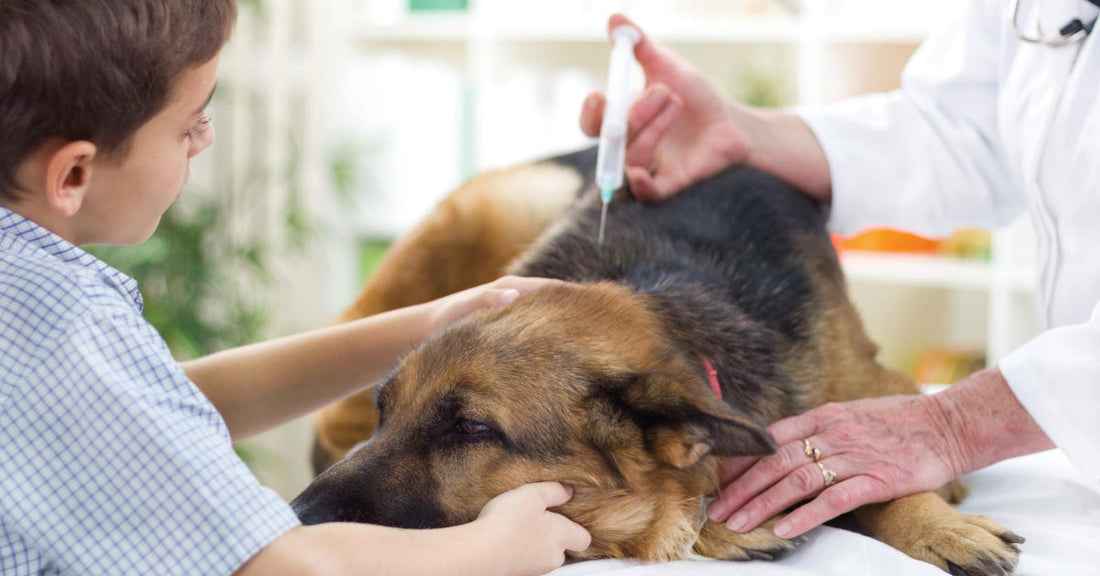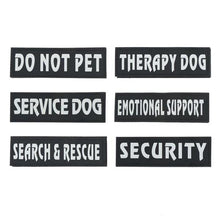Different Dog Vaccines and Why Your Dog Needs Them

Along with regular wellness exams, vaccines can help protect your dog from illness and disease. All healthy German shepherds should have an annual physical and their vaccines should be kept up-to-date.
Vaccines can help prevent many serious and potentially fatal diseases. Not to mention, in most states, rabies vaccines are required by law. However, some dogs may be deemed exempt from the rabies requirement by a veterinarian. In these cases, the vet must certify in writing that the vaccine would endanger the dog’s health because of age, illness, disability, or other medical situation, such as a severe allergic reaction to a previous vaccine.
If a dog is unvaccinated for rabies and bites a person, an officer can order the dog to be quarantined for a period of at least ten days. Complying with quarantine orders can be stressful for dogs and their owners. But, failure to comply with quarantine orders can result in a hefty fine and even imprisonment. So, it’s best to know the law in your state and county and comply with it.

Are Vaccines Safe?
Vaccines work by exposing your dog’s immune system to a harmless amount of the potentially dangerous disease. This allows the immune system to practice fighting the disease by creating antibodies. That way, if the pet ever encounters the disease, their immune system will be prepared to fight it off.
There are core vaccines that all dogs should get. There are also additional vaccines that may or may not be beneficial to your dog, depending on your lifestyle or where you live. Your vet can help you decide which vaccines are best for your dog.

Core Vaccines
The core vaccines include:
Rabies
• 1st vaccine at 14 weeks of age
• Annual vaccine every 1 – 3 years, depending on local regulations
DHPP (distemper, adenovirus (hepatitis), parainfluenza, and parvovirus)
• 1st vaccines at 8 weeks
• 2nd vaccine at 12 weeks
• 3rd vaccine at 16 weeks
• Annual vaccines every 1 – 2 years

Non-Core Vaccines
The non-core vaccines include:
Bordetella Bronchiseptica
• 1st vaccine at 8 weeks
• 2nd vaccine at 12 weeks
• 3rd vaccine at 16 weeks
• Boosters every 1-2 years
Leptospirosis
• 1st vaccine 10-12 weeks
• 2nd vaccine 16-18 weeks
• 3rd vaccine 12-16 months
• Boosters every 1-2 years
Lyme Disease (Borrelia Burgdorferi)
• 1st vaccine at 10-12 weeks
• 2nd vaccine at 16-18 weeks
• 3rd vaccine 12-16 months
• Boosters every 1-2 years

Vaccines are an important part of your dog’s wellness plan. Without vaccines, your dog is at risk of some serious diseases. However, non-core vaccines are not needed by every dog, depending upon where your life and your lifestyle.
Your vet can help you decide which vaccines are right for your pet. A brief description of the diseases vaccines can help protect your dog from are below, which may help you decide if your dog is at risk for any of them.

Rabies
The rabies virus is a deadly virus spread through the bite and possibly scratch (if it contains saliva) of an infected animal. In North America, the skunk, fox, raccoon, coyote, and bat are the primary sources of infection. Rabies vaccines must be given before a dog is infected and before the virus enters the bloodstream. There is no treatment for dogs suspected of having rabies. All unvaccinated dogs must be quarantined for 10 days to rule out a rabies infection. Dogs with rabies will be euthanatized. Humans exposed to rabies must undergo an immunoglobulin (antibody) promptly, followed by a series of painful vaccines.
Distemper
Canine distemper is a contagious airborne virus that attacks the respiratory, gastrointestinal, and nervous systems of puppies and dogs. It is a serious disease that is spread by coughing and sneezing, as well as by shared food and water bowls, toys, and other items. Infected dogs can shed the virus for months, and mother dogs can pass the virus through the placenta to their puppies. Distemper is often fatal and can be spread to and by wildlife.

Adenovirus
Adenovirus, also known as infectious hepatitis, is a virus that causes inflammation of the liver in canines and other symptoms, such as fever, decreased appetite, fatigue, nasal discharge, and cough. It is most often spread through direct contact with infected animals. Symptoms can be similar to kennel cough and can be serious. The disease can be fatal in young puppies and dogs with a serious case and there is no cure. Treatment involves helping to relieve severe symptoms.
Parainfluenza
Parainfluenza is a highly contagious airborne virus that has similar symptoms to influenza but is related to canine distemper. It is highly contagious and coughing and nasal discharge is the most common symptom. Some dogs with parainfluenza can also have Bordetella, adenovirus, and pneumonia at the same time, which can make them very sick.

Parvovirus
Parvovirus is a deadly virus that is spread through direct or indirect contact. Puppies are very vulnerable to this virus and have a very high mortality rate. Parvo is everywhere and hard to kill in the environment and can spread very easily. Dogs can be exposed anytime they sniff, lick, or consume infected feces. Parvo can be spread through petting by a person who has recently been exposed to an infected dog. It can also be spread when a puppy encounters contaminated soil, food dishes, toys, collars, leashes, shoes, clothes, etc. of people who have come in contact with an infected dog or have picked it up in the environment.
Bordetella
Bordetella is a contagious respiratory disease caused by bacteria. It is also referred to as kennel cough, upper respiratory infection, or infectious tracheobronchitis. It is spread through air droplets and by close contact with other dogs. It can be picked up anywhere but is most often spread in kennels, daycares, dog parks, places where dogs congregate, etc. Symptoms of Bordetella include sneezing, nasal discharge, congestion, and coughing.

Leptospirosis
Leptospirosis is a serious bacterial infection that can also spread to humans. There are multiple strains of the bacteria called Leptospira that can cause leptospirosis. Lepto bacteria can survive for weeks or months in the environment and thrive in wet and warm climates, especially during late summer and fall. Rain makes Lepto easier to spread. The most common way dogs get Lepto is through puddles, ponds, or lakes that have been contaminated with the urine of infected animals, including rodents and livestock. It can also be spread through contaminated bedding, food, and soil. Lepto can be serious because it makes prevents blood from clotting normally. The bacteria can also spread to the liver and kidneys. Symptoms can range from mild to severe and sometimes become life-threatening.
Lyme Disease
Lyme disease is a bacterial infection spread through the bite of infected black-legged ticks, such as deer ticks. It can affect humans and canines. In dogs, Lyme disease can cause fever, lameness, swollen lymph nodes, joint swelling, fatigue, loss of appetite, general discomfort, malaise, stiffness, and sensitivity to touch. It can also cause serious kidney problems and difficulty breathing, which is a medical emergency.

Along with core vaccines, you can your vet should decide on your pet’s risk for other diseases and what vaccines could be beneficial. Vaccines are a great way to help protect your dog from a serious illness. Your vet is also a great resource to keep you informed of disease outbreaks in your local community.
If you enjoyed this article or learned anything helpful, please leave a like and share it with others. Thank you!
You might also like: 13 Ways to Keep Your German Shepherd Healthy And Happy
























